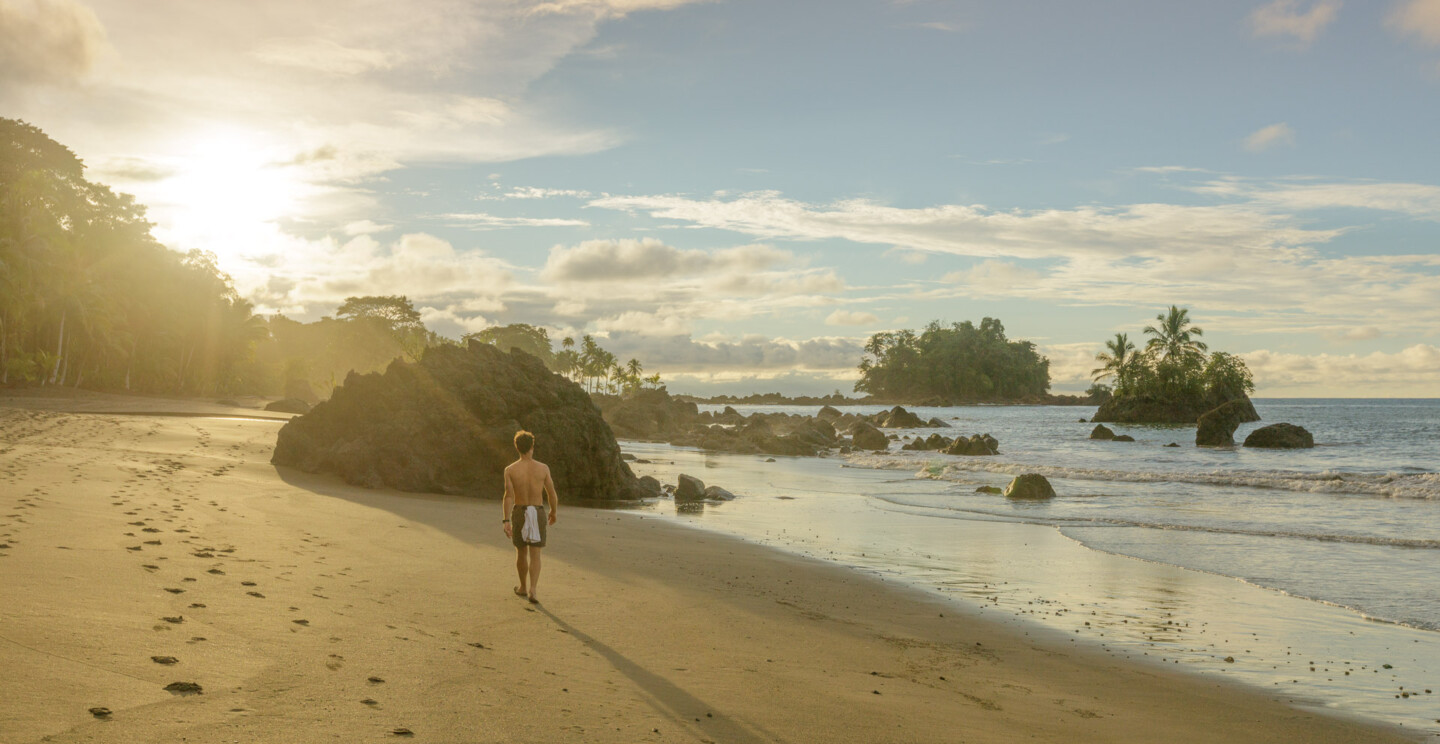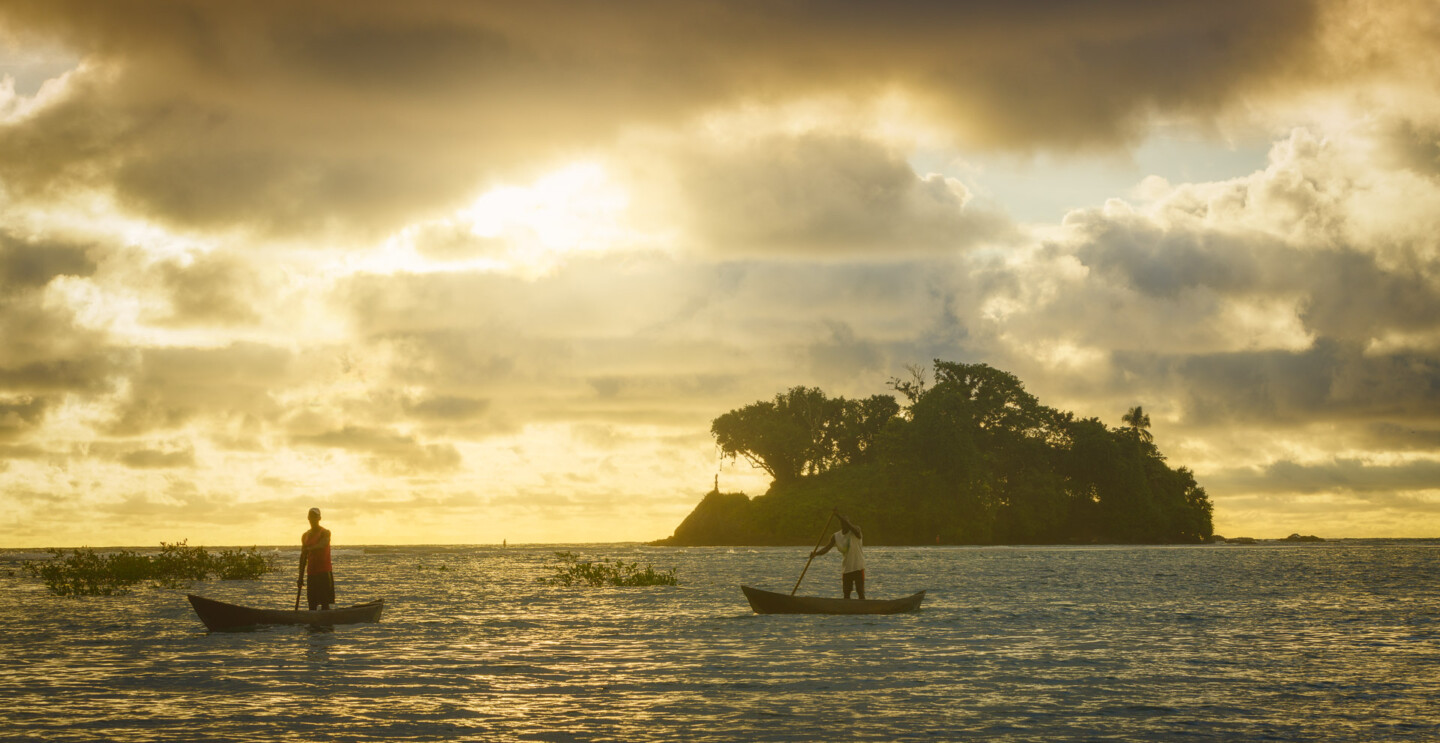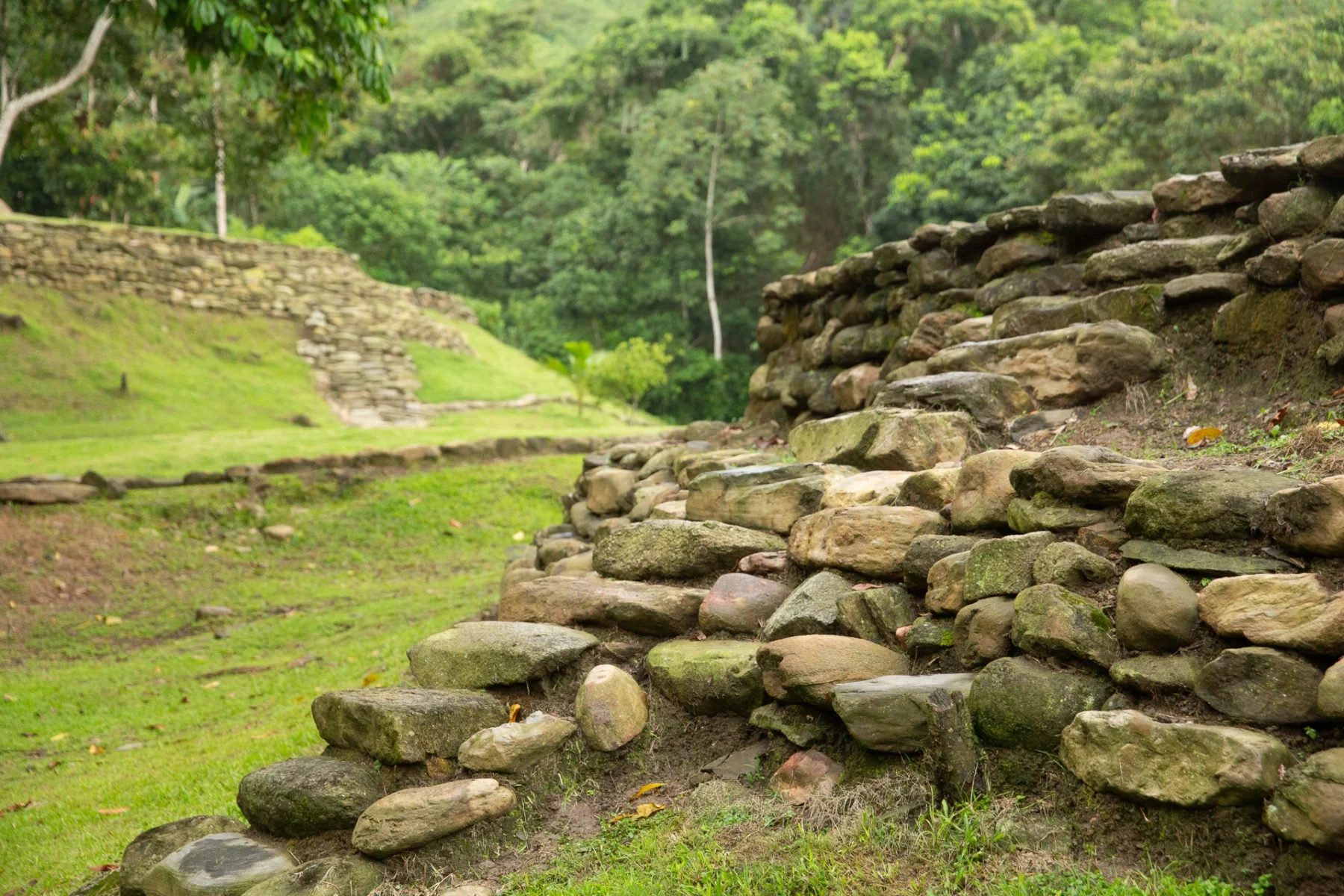Pacific Region (Región del Pacífico)
Colombia's Pacific Region is a wild, untamed paradise where lush rainforests meet the roaring ocean. Known for its Afro-Colombian culture, vibrant rhythms like currulao, and biodiverse wonders like humpback whales and sea turtles, it’s a haven for adventurers and culture seekers. Isolated yet enchanting, its black-sand beaches and dense jungles promise an unforgettable escape into nature’s raw beauty.
L'essentiel
- Mois les plus propices à la visite : Décembre, février, janvier, novembre
zone Faits
- Geographical Location: Coastal area in western Colombia, bordering the Pacific Ocean.
- Main City/Town: Buenaventura (principal port city and administrative hub).
- Approximate Area: ~83,170 sq km (one of Colombia's least densely populated regions).
- Key Geographical Features: Dense rainforests, mangrove swamps, the Baudó and San Juan rivers, and the Utría National Natural Park.
- Dominant Climate Type: Tropical rainforest (hot, humid, and high rainfall year-round).
- Population: ~1.5 million (mostly Afro-Colombian and Indigenous communities).
- Main Economic Activities: Fishing, mining (gold and platinum), timber, and limited agriculture (coconut, bananas).
- Common Languages/Dialects Spoken: Spanish (official), with Indigenous languages (e.g., Emberá, Wounaan) and Creole influences.
- Best Time to Visit: December–March (slightly drier months, though rain is frequent).
- Unique Selling Points:
- Pristine biodiversity: Humpback whale watching (July–October) and rare wildlife like the harpy eagle.
- Vibrant Afro-Colombian culture: Traditional music (currulao), festivals, and unique cuisine.
Visites et excursions d'une journée
Whale Watching in Bahía Solano
From July to October, humpback whales migrate to the warm waters of Bahía Solano, offering an unforgettable spectacle. Travelers can take boat tours to witness these majestic creatures breaching and playing with their calves. The tours often include stops at pristine beaches and snorkeling opportunities. Ideal for nature lovers and families, this half-day excursion is a must-do in the Pacific Region.
Jungle Trekking in Utría National Natural Park
Utría National Natural Park is a biodiverse paradise where dense rainforest meets the Pacific Ocean. Guided treks lead visitors through mangroves, waterfalls, and secluded beaches, with chances to spot rare wildlife like poison dart frogs and howler monkeys. The park is accessible by boat from Nuquí or El Valle, making it perfect for adventure seekers and eco-tourists. Tours typically last a full day.
Cultural Immersion in Quibdó
Quibdó, the capital of Chocó, is a vibrant hub of Afro-Colombian culture. Visitors can explore lively markets, enjoy traditional music like currulao, and savor local dishes such as sancocho de pescado. Day trips often include visits to nearby artisan communities and riverboat rides along the Atrato River. This experience is great for cultural enthusiasts and those interested in Colombia’s African heritage.
Kayaking in the San Juan River
The San Juan River offers serene kayaking routes through lush jungles and remote villages. Paddlers can glide past towering trees, spot exotic birds, and interact with local fishermen. Tours range from half-day to multi-day adventures, with options for camping along the riverbanks. Suitable for active travelers and those seeking a peaceful escape into nature.
Birdwatching in Ensenada de Utría
Ensenada de Utría is a hotspot for birdwatching, home to over 300 species, including the iconic harpy eagle and colorful toucans. Guided tours take visitors through coastal trails and mangrove forests, with expert naturalists providing insights. Early morning excursions are recommended for the best sightings. Perfect for wildlife photographers and ornithology enthusiasts.
Quand visiter
Best Time to Visit Pacific Region (Región del Pacífico)
The Pacific Region of Colombia is a lush, biodiverse area known for its rainforests, beaches, and Afro-Colombian culture. Its tropical climate means it experiences heavy rainfall year-round, but there are distinct variations in weather patterns that can influence your travel plans.
Répartition saisonnière
Dry Season (December–March)
This period sees relatively less rainfall, though showers are still frequent. Temperatures average 25–30°C (77–86°F), with high humidity. The ocean is calmer, making it ideal for beach activities and boat trips.
- Pros: Best weather for outdoor exploration, wildlife spotting (whales are visible off the coast from July–October), and beach visits.
- Cons: Higher tourist numbers and prices, especially around Christmas and New Year.
- Events: Carnival de Negros y Blancos (early January) in nearby Pasto can draw crowds.
Wet Season (April–November)
Heavy rainfall dominates, particularly from May–July and September–November. Temperatures remain warm (24–29°C / 75–84°F), but humidity is intense, and flooding can disrupt travel.
- Pros: Fewer tourists, lush landscapes, and lower prices. Ideal for cultural immersion and rainforest adventures.
- Cons: Some roads and attractions may be inaccessible due to rain. Mosquito activity increases.
- Events: Festival de Música del Pacífico Petronio Álvarez (August) celebrates Afro-Colombian music and culture.
Recommandation générale
The best time to visit depends on your priorities:
- For beachgoers and outdoor enthusiasts: December–March offers the driest conditions.
- For budget travelers and cultural experiences: April–November (especially August for the Petronio Álvarez Festival) provides lower costs and vibrant local events.
- For wildlife lovers: July–October is prime for humpback whale sightings.
Considérations
The Pacific Region is less touristy than other parts of Colombia, but prices still fluctuate. Book accommodations early during the dry season and major festivals. Pack rain gear year-round, and prioritize eco-friendly lodges to support sustainable tourism.
Ce qu'il faut emporter
Essentials for the Pacific Region's Tropical Climate
The Pacific Region of Colombia is hot, humid, and rainy year-round, with dense jungles, mangroves, and coastal areas. Pack for high humidity, sudden downpours, and insect-heavy environments.
- Quick-dry clothing (long sleeves & pants): Protects against mosquitoes and sun while drying fast in humidity.
- Heavy-duty insect repellent (DEET 30%+): Essential to deter disease-carrying mosquitoes in this high-risk zone.
- Waterproof sandals or rubber boots: Ideal for muddy trails, river crossings, and beach walks.
- Lightweight rain poncho (not umbrella): Compact and effective for sudden tropical storms.
- Reef-safe sunscreen & wide-brim hat: Intense sun near the equator demands strong protection.
Gear for Coastal & Jungle Adventures
This region is rich in wildlife, Afro-Colombian culture, and water-based activities. Be prepared for rustic conditions.
- Dry bag or waterproof phone case: Keeps essentials safe during boat rides and heavy rains.
- Binoculars: For spotting humpback whales (July–Oct) and exotic birds in jungles.
- Headlamp with red-light mode: Power outages are common; red light attracts fewer insects.
- Basic medical kit: Include antiseptic, anti-diarrheal meds, and rehydration salts—remote areas lack pharmacies.
- Cash (small bills in COP): Card access is limited; many vendors only accept cash.
Comment s'y rendre
Par avion
The Pacific Region is primarily accessed via Alfonso Bonilla Aragón International Airport (CLO) in Cali or José María Córdova International Airport (MDE) in Medellín for international travelers. Domestic travelers can also fly into Matecaña International Airport (PEI) in Pereira or El Caraño Airport (UIB) in Quibdó. From these airports, you can take domestic flights to smaller airstrips like Buenaventura (BUN) or Guapi (GPI), or continue by road or boat.
- From Cali (CLO): Take a bus or rental car to Buenaventura (3–4 hours) or arrange a boat transfer to coastal towns.
- From Quibdó (UIB): Boats or small planes connect to remote Pacific villages.
- Book domestic flights in advance, especially during peak seasons (December–January, June–July).
En bus/car
Long-distance buses are a common and affordable way to reach the Pacific Region from major Colombian cities. Key routes include:
- From Cali: Buses to Buenaventura depart frequently (3–4 hours; ~$10–15 USD).
- From Medellín: Buses to Quibdó (10–12 hours; ~$20–30 USD), with onward boat options.
- From Bogotá: Overnight buses to Cali or Pereira (8–10 hours), then transfer to Buenaventura.
Roads can be winding and slow in rainy seasons—pack patience and snacks.
En voiture (conduite)
The Pacific Region is accessible by car, but routes vary in difficulty:
- From Cali: Take Highway 25 to Buenaventura (paved but mountainous).
- From Quibdó: A 4x4 is recommended for unpaved roads to coastal areas like Nuquí.
- Fuel stations are sparse beyond cities—fill up in Cali or Medellín.
Conseils pratiques
- Boats are essential for reaching remote areas—schedule with local operators in Buenaventura or Quibdó.
- Travel times can double in rainy seasons (April–June, October–November).
- Carry cash; ATMs are rare outside major towns.
Se déplacer
By Boat & Water Taxi
Given the Pacific Region's dense rivers and coastal geography, boats are the most common and practical way to travel. Water taxis and lanchas (small motorized boats) operate between towns like Buenaventura, Guapi, and Tumaco, as well as to remote beaches and islands. Routes are informal but frequent; ask locals or at docks for schedules. Costs vary by distance (e.g., COP 20,000–50,000 per person). Bring cash, wear waterproof gear, and expect basic seating. For eco-tours or mangrove exploration, hire private boats through lodges or guides.
- Negotiate fares upfront for private hires.
- Travel early—routes slow in afternoon tides.
- Pack light; boats have limited space.
Local Buses & Colectivos
In urban hubs like Buenaventura, colectivos (shared vans) and buses serve main roads, but coverage is limited outside cities. Fares are cheap (COP 2,000–5,000), paid in cash. Routes are rarely marked; confirm destinations with the driver. For intercity travel, chivas (colorful open-air buses) connect smaller towns but are slow and crowded. Ideal for short distances or cultural immersion.
- Carry small bills for exact change.
- Expect frequent stops and flexible schedules.
Taxis & Mototaxis
Taxis are available in cities but lack meters—agree on fares before boarding (e.g., COP 10,000–20,000 for short trips). In rural areas, mototaxis (motorcycle taxis) are cheaper and navigate unpaved roads. Not recommended for long distances or those uncomfortable with motorbikes. Ride-sharing apps like Uber are absent; rely on local taxi stands.
- Ask your accommodation to call reputable taxis at night.
- Helmets are rarely provided; bring your own if safety-conscious.
Walking & Cycling
Walking is feasible in compact towns like Nuquí or Bahía Solano, where attractions are close. Sidewalks may be uneven. Biking is rare due to muddy terrain and lack of rentals, but some eco-lodges offer bikes for short explorations. Bring sturdy footwear and rain gear.
- Avoid walking alone at night in urban areas.
- Hire a local guide for jungle trails.
Car & Scooter Rentals
Renting a car is impractical—roads are often unpaved, flooded, or nonexistent beyond highways. Scooters are occasionally rented in tourist areas but risky without local driving experience. Most travelers rely on boats and guided transport.
- 4x4 rentals in Buenaventura require permits for rural zones.
- Check insurance coverage for rough terrain.
Culture
A Mosaic of Afro-Colombian Heritage
The Pacific Region of Colombia is a vibrant tapestry of Afro-Colombian culture, shaped by centuries of African, Indigenous, and Spanish influences. Unlike other regions, its isolation—bordered by dense rainforests and the Pacific Ocean—has preserved traditions with remarkable authenticity. The rhythm of life here is dictated by the sea, rivers, and mangroves, with communities deeply connected to ancestral practices.
Music and Dance: The Pulse of the Pacific
Music is the soul of the Pacific, with currulao standing as its most iconic genre. Played with marimbas, drums like the cununo and bombo, and rattles, its hypnotic beats accompany dances that tell stories of resistance and joy. The Alabao, a mournful funeral chant, and the lively juga showcase the region's emotional depth. Annual festivals like the Petronio Álvarez in Cali draw crowds to celebrate these sounds.
- Attend a currulao performance in Buenaventura or Quibdó for an immersive experience.
- Respect the sacred context of Alabaos; they’re not merely performances.
Cuisine: Flavors of the Jungle and Sea
Pacific cuisine is a bold fusion of African techniques and local ingredients. Sancocho de pescado, a hearty fish stew with coconut milk and plantains, is a staple. Encocado (seafood in coconut sauce) and arroz con camarones highlight the region’s reliance on seafood. Don’t miss chontaduro, a peach-palm fruit often served with salt and honey—a snack sold by street vendors.
- Try tapao, a communal dish of rice, fish, and plantains wrapped in banana leaves.
- Visit Buenaventura’s market for the freshest piangua (black clam) dishes.
Langue et traditions orales
Spanish here is peppered with Palenquero and African-derived words, creating a distinct dialect. Oral storytelling thrives, with decimeros (poets) preserving histories through improvised verses. The region’s mitos y leyendas (myths) often feature the Tunda, a shapeshifting spirit, and the Riviel, a river guardian.
Crafts and Daily Life
Artisans weave werregue palm fibers into baskets and trays, a skill passed through generations. In villages like Guapi, wooden canoes are hand-carved, essential for navigating the labyrinthine rivers. The mola textiles, though more associated with Indigenous groups, sometimes appear in hybrid designs.
- Support local cooperatives in Tumaco for authentic werregue crafts.
- Learn canoe-making in Guapi—many workshops welcome visitors.
Spirituality and Festivals
Rooted in African traditions, Santería and chigualo (child funeral rites) coexist with Catholicism. The Fiesta de San Pacho in Quibdó (September) transforms streets into a parade of drums, saints’ statues, and dancers. Semana Santa in Tumaco features underwater crosses, honoring the sea’s power.


